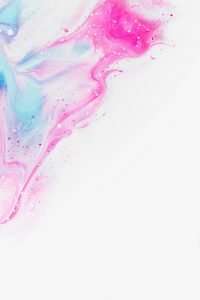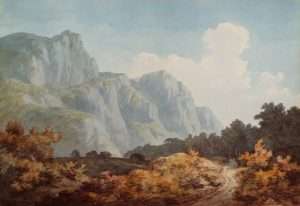The art and culture of indigenous, tribal peoples has long been celebrated as one of the great treasures of the world. For many people, the word “tribal” evokes images of mysterious, primordial beauty: traditional art forms ranging from masks created for religious ceremonies to functional objects like baskets, pottery, or weaving.
The term “tribal” is also used disparagingly to describe aberrant behavior in modern societies. The word “tribe” implies a primitive state of social organization that is believed to be on the way out, like an atavistic throwback to a distant past.
In some cases, tribal art is even more highly prized by collectors than traditional art from major cultures such as China or Egypt — a value that can lead to unethical exploitation when collectors and dealers fail to understand that for many tribal peoples their cultural heritage is priceless and not for sale.
The truth about “tribal art” turns out to be more complex than it appears at first glance. What exactly does this term mean when applied to objects in museum collections? What is the relationship between so-called tribal art and modern, national cultures? And what ethical considerations should museums take into account with regard to collecting works from indigenous cultures?
Artists, dealers, and collectors have long made the distinction between “art” and “craft,” but what about the distinction between “tribal art” and “fine art”?
The distinction is clear. Tribal art derives from a primitive and/or outsider culture, whereas fine art is created by members of cultured society. At first glance, this seems to be an invidious distinction: tribal people are said to be less developed, or perhaps even inferior. But is it really?
Tribal art is not just fine art made by non-members of the dominant culture. It’s also craft made by members of non-dominant cultures.
And therein lies a problem: Does tribal art belong in museums along with fine art? And does craft belong alongside tribal art? After all, both are also considered crafts rather than fine arts.
The lines have been drawn, but who drew them? And for what purpose?
Tribal art is a form of art that was created by tribal people and indigenous people who were not influenced by civilization or western culture. This type of art is typically hand made and is used for religious and cultural purposes. As the world has become more modernized, tribal art is becoming more and more rare.
Tribal art is full of color and vibrant imagery. The colors are usually very vibrant because the materials used to create these works of art are simple and readily available. The colors used in tribal artwork are normally red, black, yellow, white, and brown. These colors are bright and stand out when put together in an artistic way that is appealing to the eye.
The materials that these people use to create their art are feathers, wood, bones, clay, and rocks. Because these materials were readily available to them in their natural environment they were able to utilize them to create a beautiful piece of work. Pieces that contain feathers typically depict birds or other animals that can be found in nature. Wood carvings are often created as masks or figurines to depict a god or figure from their religion or folklore. Clay pieces are often small animals or figures that would be used in ceremonies such as fertility rites or prayer rituals.*
Tribal art is the word used to describe the arts of indigenous peoples around the world. Tribal art can vary greatly by region, but it typically includes handmade or handcrafted objects and decorations made from a variety of materials including clay, wood, stone and animal parts. There are a number of different categories that are used to classify tribal art. These include utilitarian art, decorative art and fine art.
Tribes in various regions of the world have their own distinctive styles of arts and crafts that are ideal for home décor. Contemporary artists often use tribal art as inspiration for modern pieces. However, it’s important to ensure you’re buying authentic pieces from reputable dealers when you purchase items with the intention of having them as part of your home decor.*
Tribal art is a general term for the artifacts of indigenous peoples. It may include anything from stone tools, pottery, and jewelry to architecture, textiles, body painting and tattooing, ceremonial objects, and wood carving.
The term “tribal” is applied to indigenous peoples who remain relatively isolated from other groups of people. However, there are no hard and fast rules as to what constitutes tribal art, since the term is applied more by modern societies than by the artists themselves. Some people who consider themselves tribal artists will note that they are not associated with any specific tribe (such as in cases where the tribe has been absorbed into another), while others might claim affiliation to a tribe which is considered extinct or otherwise no longer in existence.
In addition to being an object of study in its own right, tribal art has also been adopted by non-indigenous artists for use as inspiration in their own works.”
Art is a universal. It is something that we all like and are drawn to. It becomes important in tribal art because it enhances the life of the tribe and its members. This means that an artist’s role is not just to express what he feels but also to be part of the social unit, so he relays its messages through his art pieces.
This is why most tribal art is done in collaboration with other artists, who are viewed as partners in the creative process. They work together because they share a common goal – to enhance their culture as well as their individual talents. This is crucial in tribal art because it is a form of visual expression that is associated with each person’s identity and history.
Beads, mostly made from glass, shells or wood, are used in tribal art to create different designs. Examples include necklaces, bracelets and earrings, which vary according to individual preferences. The beads are also used to create full-body costumes such as capes and dresses for ceremonial use during wedding ceremonies and festivals. And if you want your outfit to come out looking great, you will have to hire an artist who can combine colors, shapes and sizes while still staying true to the theme of your creation.



